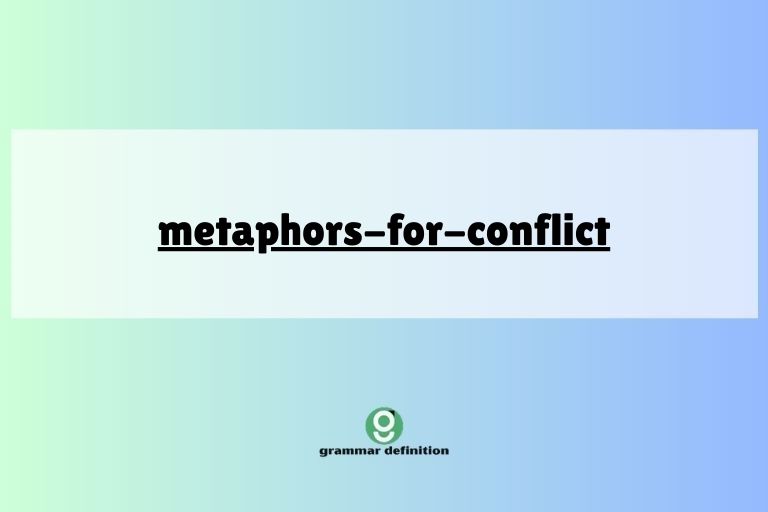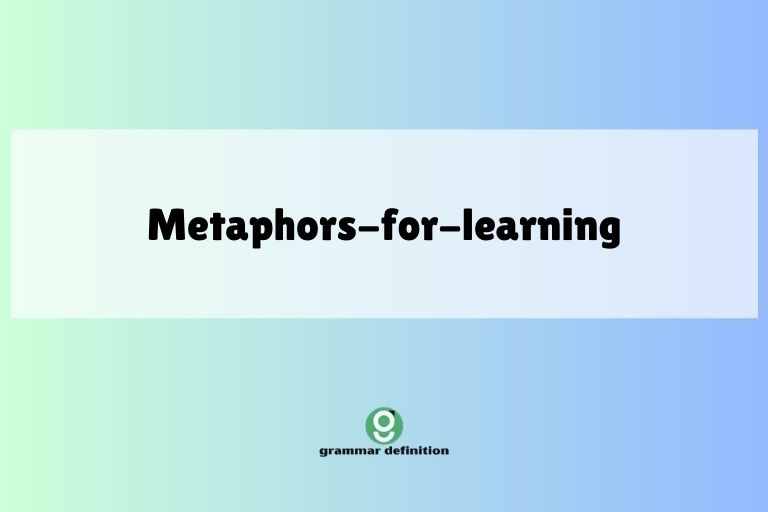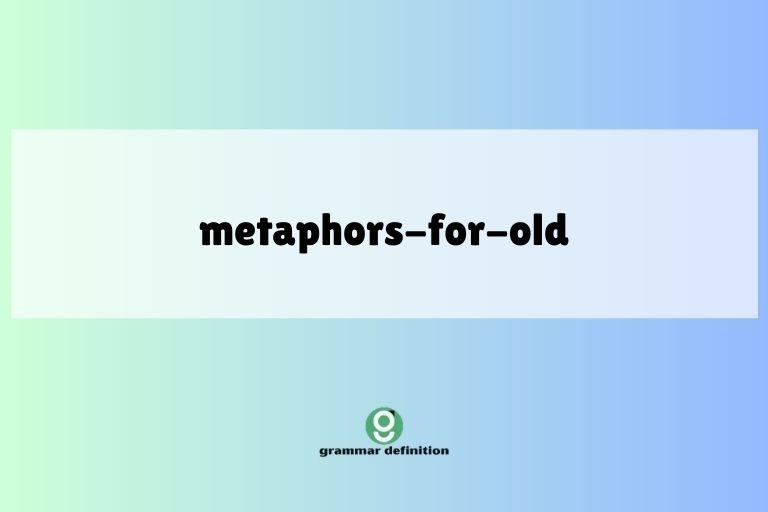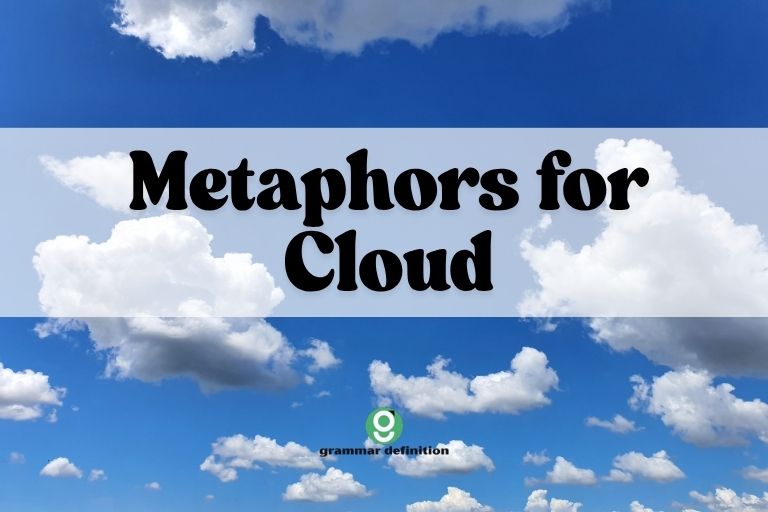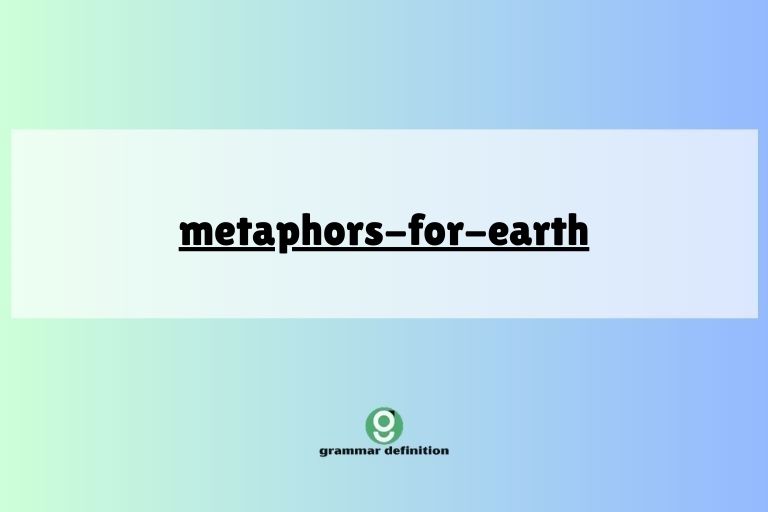Metaphors for Loyalty: A Grammatical Exploration
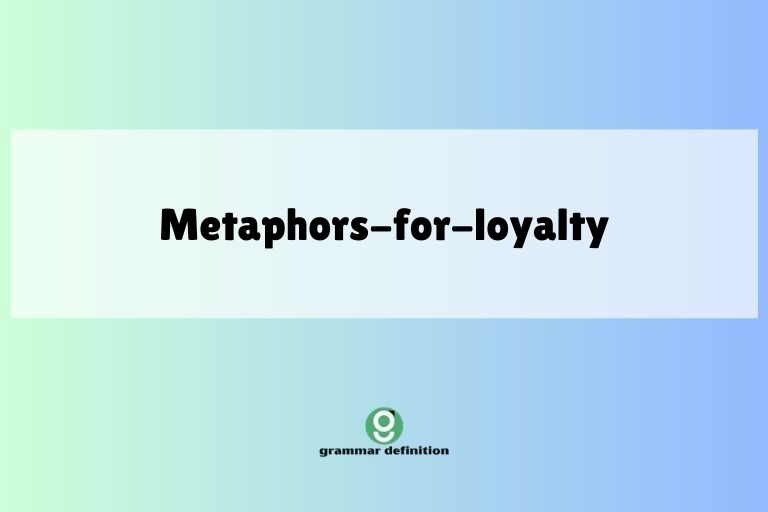
Loyalty, a cornerstone of human relationships and societal structures, is often expressed through vivid and evocative language. Metaphors, in particular, play a crucial role in conveying the depth and complexity of this abstract concept.
Understanding the grammatical structures that underpin these metaphors not only enhances our comprehension of loyalty itself but also sharpens our linguistic skills. This article delves into the grammatical landscape of metaphors for loyalty, examining their various forms, functions, and applications.
It is designed for English language learners, writers, and anyone interested in exploring the power of figurative language.
Table of Contents
- Introduction
- Definition of Metaphor and Loyalty
- Structural Breakdown of Loyalty Metaphors
- Types of Metaphors for Loyalty
- Examples of Metaphors for Loyalty
- Usage Rules for Metaphors of Loyalty
- Common Mistakes When Using Loyalty Metaphors
- Practice Exercises
- Advanced Topics
- FAQ Section
- Conclusion
Definition of Metaphor and Loyalty
To understand how metaphors function in expressing loyalty, it’s essential to define both terms clearly. Metaphors are figures of speech that transfer meaning from one concept to another, while loyalty is a complex human emotion and commitment.
What is a Metaphor?
A metaphor is a figure of speech that directly compares two unrelated things without using “like” or “as.” It asserts that one thing *is* another, creating a vivid image and highlighting a shared quality. Metaphors enrich language by adding layers of meaning and encouraging creative interpretation.
They are powerful tools for conveying abstract ideas in a more concrete and relatable way. Consider the phrase “time is money,” which doesn’t literally mean time can be exchanged for currency, but rather that it’s a valuable resource that should be used wisely.
Defining Loyalty
Loyalty is a complex emotion characterized by unwavering allegiance, faithfulness, and commitment to a person, group, cause, or ideal. It involves a sense of duty, responsibility, and dedication, often demonstrated through consistent support and defense, even in the face of adversity.
Loyalty can manifest in various forms, such as loyalty to family, friends, country, or employer. It often implies a strong bond and a willingness to prioritize the interests of the object of loyalty above one’s own.
The essence of loyalty lies in its steadfastness and resilience.
Structural Breakdown of Loyalty Metaphors
Metaphors for loyalty can be analyzed through their grammatical structures. Understanding these structures helps in identifying and interpreting the metaphors effectively.
Common structures include subject-verb-object constructions, adjective-noun combinations, and prepositional phrases.
Subject-Verb-Object Structures
In this structure, the subject represents the person or entity displaying loyalty, the verb describes the action that demonstrates loyalty, and the object is the recipient of the loyalty. This structure provides a clear and direct way to express the act of being loyal.
For example, “He *defended* his friend” shows the subject (He) performing the action of defending (verb) towards the recipient of loyalty (his friend).
Adjective-Noun Combinations
This structure uses an adjective to modify a noun, creating a metaphorical description of loyalty. The adjective adds a specific quality or characteristic to the noun, enhancing the metaphorical meaning.
For instance, “unwavering support” uses the adjective “unwavering” to emphasize the steadfast nature of the “support,” thus conveying a sense of strong loyalty.
Prepositional Phrases
Prepositional phrases can add context and detail to metaphors for loyalty by indicating the direction, purpose, or extent of the loyalty. These phrases typically consist of a preposition followed by a noun or pronoun.
For example, “loyalty *to the cause*” uses the preposition “to” to specify the object of loyalty, in this case, “the cause.” This structure helps to define the scope and focus of the loyalty being expressed.
Types of Metaphors for Loyalty
Metaphors for loyalty can be categorized based on the underlying concepts they draw upon. These categories include metaphors of strength, protection, commitment, relationships, and navigation.
Strength and Steadfastness Metaphors
These metaphors portray loyalty as a form of strength, stability, and resilience. They often use imagery of solid structures, unyielding forces, and unwavering resolve.
Examples include “a rock of support,” “an unshakeable commitment,” and “a pillar of strength.” These metaphors emphasize the enduring and dependable nature of loyalty.
Protection and Defense Metaphors
These metaphors depict loyalty as a shield against harm or a defense against threats. They frequently employ imagery of guardians, fortifications, and safeguards.
Examples include “a bulwark against betrayal,” “a shield of protection,” and “a guardian angel.” These metaphors highlight the protective and safeguarding aspects of loyalty.
Commitment and Dedication Metaphors
These metaphors emphasize the dedication, devotion, and unwavering commitment that characterize loyalty. They often use imagery of promises, vows, and unwavering allegiance.
Examples include “a sacred vow,” “an unbreakable promise,” and “a devoted follower.” These metaphors underscore the deep-seated and unwavering nature of loyalty.
Relationship and Bond Metaphors
These metaphors focus on the connections, bonds, and relationships that underpin loyalty. They frequently use imagery of intertwined threads, strong chains, and unbreakable links.
Examples include “an unbreakable bond,” “a strong connection,” and “intertwined destinies.” These metaphors highlight the relational and interconnected aspects of loyalty.
Navigation and Guidance Metaphors
These metaphors portray loyalty as a guiding force or a reliable compass in navigating difficult situations. They often use imagery of landmarks, maps, and guiding lights.
Examples include “a guiding star,” “a steady compass,” and “a reliable landmark.” These metaphors emphasize the directional and supportive aspects of loyalty.
Examples of Metaphors for Loyalty
The following tables provide extensive examples of metaphors for loyalty, categorized according to the types discussed above. Each table contains numerous examples to illustrate the diverse ways in which loyalty can be expressed metaphorically.
Strength and Steadfastness Examples
This table showcases metaphors that equate loyalty with strength and unwavering resolve. These examples highlight the enduring and dependable qualities associated with loyalty.
| Metaphor | Explanation |
|---|---|
| A rock of support | Implies unwavering and solid support. |
| An unshakeable commitment | Suggests a dedication that cannot be easily broken. |
| A pillar of strength | Indicates a source of stability and resilience. |
| A fortress of allegiance | Conveys a strong and impenetrable loyalty. |
| An anchor in the storm | Represents stability and security during difficult times. |
| A bulwark of fidelity | Suggests a strong defense of faithfulness. |
| A steadfast ally | Implies unwavering support and partnership. |
| A granite resolve | Indicates a firm and unbreakable determination. |
| An ironclad promise | Suggests a commitment that cannot be broken. |
| A bedrock of trust | Implies a fundamental and unwavering trust. |
| Unwavering dedication | Demonstrates a commitment that never falters. |
| A resolute defender | Highlights a steadfast and determined advocate. |
| A solid bond | Indicates a strong and unbreakable connection. |
| A firm foundation | Suggests a stable and reliable base of support. |
| An unbreakable spirit | Conveys an indomitable loyalty that cannot be defeated. |
| A tower of loyalty | Implies a towering and unwavering allegiance. |
| A bastion of support | Indicates a fortified and reliable source of backing. |
| A mighty oak | Represents strength, endurance, and unwavering support. |
| An enduring devotion | Suggests a lasting and unwavering commitment. |
| A resilient allegiance | Implies a loyalty that can withstand challenges. |
| A staunch supporter | Demonstrates a firm and unwavering advocate. |
| A steadfast friend | Highlights an unwavering and reliable companion. |
| An immutable bond | Indicates a connection that cannot be changed. |
| An unwavering commitment | Demonstrates a dedication that never falters. |
| A firm foundation | Suggests a stable and reliable support system. |
| A pillar of strength | Indicates a source of stability and resilience. |
Protection and Defense Examples
This table presents metaphors that equate loyalty with protection and defense. These examples emphasize the safeguarding aspects of loyalty.
| Metaphor | Explanation |
|---|---|
| A bulwark against betrayal | Represents a strong defense against treachery. |
| A shield of protection | Implies a safeguard against harm or danger. |
| A guardian angel | Suggests a watchful protector. |
| A sentinel of trust | Indicates a vigilant guardian of faithfulness. |
| A fortress against adversity | Conveys a strong defense against challenges. |
| A safeguard of allegiance | Implies a protective measure for loyalty. |
| A defender of honor | Highlights someone who protects reputation and integrity. |
| A wall of defense | Suggests an impenetrable barrier against threats. |
| A loyal vanguard | Indicates a protective force at the forefront. |
| A champion of fidelity | Represents a strong advocate for faithfulness. |
| A knight in shining armor | Implies a valiant protector. |
| A watchful protector | Suggests a vigilant guardian. |
| A stalwart defender | Indicates a reliable and unwavering protector. |
| A bastion of safety | Conveys a secure refuge. |
| A shield against slander | Represents protection from false accusations. |
| A guardian of secrets | Implies someone who safeguards confidential information. |
| A protector of the innocent | Highlights someone who defends the vulnerable. |
| A sentinel of justice | Indicates a vigilant guardian of fairness. |
| A bulwark against corruption | Represents a strong defense against unethical behavior. |
| A safeguard of principles | Implies a protective measure for moral values. |
| A defender of rights | Highlights someone who protects fundamental freedoms. |
| A wall of resistance | Suggests an impenetrable barrier against oppression. |
| A loyal shield | Implies a protective and unwavering safeguard. |
| A fortress of integrity | Conveys a strong defense of moral principles. |
| A sentinel of truth | Indicates a vigilant guardian of honesty. |
| A guardian of traditions | Someone who protects cultural heritage. |
Commitment and Dedication Examples
This table provides metaphors that equate loyalty with commitment and dedication. These examples emphasize the unwavering nature of loyalty.
| Metaphor | Explanation |
|---|---|
| A sacred vow | Represents a solemn and binding promise. |
| An unbreakable promise | Implies a commitment that cannot be broken. |
| A devoted follower | Suggests unwavering allegiance and dedication. |
| A staunch advocate | Indicates a firm and unwavering supporter. |
| A loyal disciple | Conveys unwavering commitment to a teacher or cause. |
| A dedicated servant | Implies selfless commitment and service. |
| A faithful companion | Highlights unwavering support and companionship. |
| A committed partner | Suggests unwavering dedication and collaboration. |
| A steadfast believer | Indicates unwavering faith and conviction. |
| A true patriot | Represents unwavering love and dedication to one’s country. |
| A loyal subject | Implies unwavering allegiance to a ruler or government. |
| A devoted fan | Suggests unwavering enthusiasm and support. |
| A steadfast ally | Indicates unwavering support and partnership. |
| A true friend | Conveys unwavering loyalty and companionship. |
| A committed volunteer | Represents selfless dedication and service. |
| A loyal employee | Implies unwavering dedication and commitment to the company. |
| A devoted spouse | Highlights unwavering love and commitment in marriage. |
| A steadfast guardian | Suggests unwavering protection and care. |
| A dedicated mentor | Indicates unwavering commitment to guiding and supporting others. |
| A true believer | Represents unwavering faith and conviction. |
| A loyal advocate | Implies unwavering support and defense. |
| A committed activist | Suggests unwavering dedication to a cause. |
| A steadfast supporter | Indicates unwavering backing and encouragement. |
| A true devotee | Represents unwavering commitment and worship. |
| A loyal follower | Implies unwavering allegiance and support. |
| A committed disciple | Suggests unwavering dedication to a teacher or ideology. |
Relationship and Bond Examples
This table showcases metaphors that equate loyalty with relationships and bonds. These examples emphasize the interconnectedness and strength of loyal connections.
| Metaphor | Explanation |
|---|---|
| An unbreakable bond | Represents a connection that cannot be severed. |
| A strong connection | Implies a powerful and resilient relationship. |
| Intertwined destinies | Suggests a shared fate and deep connection. |
| A close-knit community | Indicates a strong and supportive group. |
| A united front | Conveys a cohesive and unwavering alliance. |
| A shared history | Implies a deep connection through common experiences. |
| A common cause | Highlights a shared purpose and dedication. |
| A family tie | Suggests a strong and enduring connection. |
| A partnership of trust | Indicates a collaborative relationship based on faithfulness. |
| A circle of friends | Represents a supportive and loyal group. |
| A web of support | Implies a network of unwavering assistance. |
| A chain of allegiance | Suggests a series of interconnected loyalties. |
| A tapestry of loyalty | Indicates a rich and complex network of faithfulness. |
| A bridge of understanding | Conveys a connection built on empathy and trust. |
| A bond of brotherhood | Represents a strong connection based on shared values. |
| A sisterhood of support | Implies a powerful and supportive female connection. |
| A kindred spirit | Suggests a deep connection based on shared interests. |
| A union of minds | Indicates a strong connection through shared ideas. |
| A fusion of hearts | Conveys a deep emotional connection. |
| A link of friendship | Represents a strong and enduring bond. |
| A network of trust | Implies a supportive and reliable system. |
| A coalition of loyalty | Suggests a united group of faithful individuals. |
| A fabric of connection | Indicates a rich and intricate relationship. |
| A thread of kinship | Conveys a sense of family and belonging. |
| A resonance of souls | Represents a deep and harmonious connection. |
| A synergy of purpose | Implies a collaborative and focused relationship. |
Navigation and Guidance Examples
This table provides examples of metaphors that equate loyalty with navigation and guidance. These metaphors emphasize the supportive and directional aspects of loyalty.
| Metaphor | Explanation |
|---|---|
| A guiding star | Represents a source of direction and inspiration. |
| A steady compass | Implies reliable guidance and direction. |
| A reliable landmark | Suggests a trusted point of reference. |
| A beacon of hope | Indicates a source of encouragement and optimism. |
| A map of fidelity | Conveys a clear path to unwavering loyalty. |
| A chart of allegiance | Implies a guide to unwavering commitment. |
| A lighthouse of trust | Highlights a source of guidance and security. |
| A compass of integrity | Suggests a reliable guide to moral principles. |
| A polestar of devotion | Indicates a constant and reliable source of dedication. |
| A guide through darkness | Represents support and direction in difficult times. |
| A north star of truth | Implies a constant and reliable source of honesty. |
| A pathway of commitment | Suggests a clear and unwavering course of dedication. |
| A trail of allegiance | Indicates a clear path of unwavering support. |
| A road of fidelity | Conveys a straightforward course of faithfulness. |
| A landmark of honor | Represents a trusted point of reference for ethical behavior. |
| A beacon of justice | Implies a source of guidance for fairness. |
| A map of ethics | Suggests a clear guide to moral principles. |
| A chart of righteousness | Indicates a guide to ethical conduct. |
| A lighthouse of morality | Conveys a source of guidance for ethical behavior. |
| A compass of virtue | Represents a reliable guide to moral excellence. |
| A polestar of integrity | Implies a constant and reliable source of honesty. |
| A guide through uncertainty | Suggests support and direction in confusing situations. |
| A north star of wisdom | Indicates a constant and reliable source of knowledge. |
| A pathway of dedication | Conveys a clear and unwavering course of commitment. |
| A trail of support | Represents a clear path of unwavering assistance. |
| A road of commitment | Implies a straightforward course of dedication. |
Usage Rules for Metaphors of Loyalty
Using metaphors effectively requires adherence to certain rules. These rules ensure that the metaphors are clear, appropriate, and impactful.
Key considerations include contextual appropriateness, avoiding cliches, and cultural sensitivity.
Contextual Appropriateness
The choice of metaphor should align with the context in which it is used. A metaphor that is suitable for a formal speech may not be appropriate for a casual conversation.
Consider the audience, the setting, and the overall tone when selecting a metaphor. For instance, using a highly technical metaphor in a speech to a general audience might lead to confusion, while a simple and relatable metaphor would be more effective.
Avoiding Cliches
Cliches are overused metaphors that have lost their impact. Using cliches can make your writing or speech sound unoriginal and unimaginative.
Strive to create fresh and innovative metaphors that offer a unique perspective on loyalty. Instead of saying “loyal as a dog,” try “his loyalty was a steadfast flame, burning bright even in the darkest night.”
Cultural Sensitivity
Metaphors can be culturally specific, and what resonates in one culture may not have the same meaning or impact in another. Be mindful of cultural differences and avoid using metaphors that could be offensive or misunderstood.
Research the cultural connotations of a metaphor before using it in a cross-cultural context. For example, metaphors involving animals might have different meanings in different cultures.
Common Mistakes When Using Loyalty Metaphors
Many common mistakes can occur when using metaphors for loyalty. Recognizing and avoiding these errors can significantly improve the clarity and impact of your communication.
| Incorrect | Correct | Explanation |
|---|---|---|
| He was a brick wall of loyalty. | He was a bulwark of loyalty. | “Brick wall” is a common and less impactful metaphor. “Bulwark” is stronger and more evocative. |
| Her loyalty was like glue. | Her loyalty was an unbreakable bond. | “Like glue” is a simile, not a metaphor, and it is also a cliche. |
| They were a ship of loyalty. | They were a fleet of loyalty. | “Ship” implies a single entity, whereas “fleet” suggests a group working together, representing loyalty more accurately. |
| His word was his bond, like always. | His word was his bond, an unbreakable promise. | The original sentence uses “like always” which weakens the metaphor. The corrected sentence strengthens it by adding “an unbreakable promise”. |
| Their loyalty was a tree. | Their loyalty was a mighty oak. | “A tree” is too generic. “A mighty oak” is more specific and conveys strength and endurance. |
Practice Exercises
These exercises will help you practice identifying, creating, and correcting metaphors for loyalty. Each exercise focuses on a different aspect of using these metaphors effectively.
Exercise 1: Identifying Loyalty Metaphors
Identify the metaphors for loyalty in the following sentences. For each sentence, explain what makes the phrase a metaphor.
| Question | Answer |
|---|---|
| 1. His loyalty was a guiding star in their darkest hours. | Guiding star. It’s a metaphor because loyalty is compared to a celestial body that offers direction and hope. |
| 2. She was a rock of support for her team. | Rock of support. It’s a metaphor because loyalty is compared to a solid and unwavering foundation. |
| 3. Their friendship was an unbreakable bond. | Unbreakable bond. It’s a metaphor because loyalty is compared to a strong and resilient connection. |
| 4. He stood as a sentinel of trust, guarding their secrets. | Sentinel of trust. It’s a metaphor because loyalty is compared to a vigilant guardian of faithfulness. |
| 5. Her commitment was a sacred vow, never to be broken. | Sacred vow. It’s a metaphor because loyalty is compared to a solemn and binding promise. |
| 6. The team’s unity was a fortress against adversity. | Fortress against adversity. It’s a metaphor because loyalty is compared to a strong defense against challenges. |
| 7. His dedication was a beacon of hope for the struggling company. | Beacon of hope. It’s a metaphor because loyalty is compared to a source of encouragement and optimism. |
| 8. Their partnership was a bridge of understanding, built on loyalty. | Bridge of understanding. It’s a metaphor because loyalty is compared to a connection built on empathy and trust. |
| 9. He remained a staunch advocate for his beliefs, showing unwavering loyalty. | Staunch advocate. It’s a metaphor because loyalty is compared to a firm and unwavering supporter. |
| 10. Her loyalty was a tapestry of connection, woven with shared experiences. | Tapestry of connection. It’s a metaphor because loyalty is compared to a rich and complex network of faithfulness. |
Exercise 2: Creating Loyalty Metaphors
Create metaphors for loyalty based on the given prompts. Try to be creative and avoid cliches.
| Prompt | Answer |
|---|---|
| 1. Loyalty as a plant | Loyalty is a deep-rooted tree, weathering any storm. |
| 2. Loyalty as a building | Loyalty is a solid foundation, upon which trust is built. |
| 3. Loyalty as a journey | Loyalty is a steadfast compass, guiding us through uncertainty. |
| 4. Loyalty as a weapon | Loyalty is a shield of protection, guarding against betrayal. |
| 5. Loyalty as a light | Loyalty is a beacon of hope, shining through the darkest night. |
| 6. Loyalty as a song | Loyalty is a harmonious melody, resonating with shared values. |
| 7. Loyalty as a river | Loyalty is a flowing river, carving a path of trust. |
| 8. Loyalty as a dance | Loyalty is an intertwined dance, moving in harmony. |
| 9. Loyalty as a shield | Loyalty is a shield, deflecting the arrows of doubt. |
| 10. Loyalty as a mountain | Loyalty is a towering mountain, unyielding and strong. |
Exercise 3: Correcting Misused Loyalty Metaphors
Correct the following sentences that contain misused or ineffective metaphors for loyalty. Explain why the original metaphor is weak and how your correction improves it.
| Incorrect | Correct | Explanation |
|---|---|---|
| 1. His loyalty was like a rock. | His loyalty was an unshakeable mountain. | “Like a rock” is a simile and a cliche. “Unshakeable mountain” is a stronger and more vivid metaphor. |
| 2. Her commitment was pretty loyal. | Her commitment was an unbreakable vow. | “Pretty loyal” is vague and lacks impact. “Unbreakable vow” is more specific and emphasizes the strength of the commitment. |
| 3. Their friendship was kind of a bond. | Their friendship was a tapestry of intertwined destinies. | “Kind of a bond” is weak and uninspired. “Tapestry of intertwined destinies” is more evocative and meaningful. |
| 4. He was a wall of loyalty, sort of. | He was a steadfast bulwark of loyalty. | “Wall of loyalty, sort of” is weak. “Steadfast bulwark of loyalty” is stronger and more descriptive. |
| 5. Her dedication was like glue, I guess. | Her dedication was a sacred fire, burning with passion. | “Like glue, I guess” is a simile and lacks impact. “Sacred fire, burning with passion” is more poetic and conveys greater intensity. |
| 6. Their partnership was a bridge, maybe? | Their partnership was a bridge of unwavering support. | “A bridge, maybe?” is uncertain. “A bridge of unwavering support” is stronger and more definitive. |
| 7. He was a supporter, I think. | He was a staunch advocate, a pillar of strength. | “A supporter, I think” is weak and lacks conviction. “A staunch advocate, a pillar of strength” is more assertive and descriptive. |
| 8. Her loyalty was a thing. | Her loyalty was a guiding star, lighting their path. | “Her loyalty was a thing” is vague and meaningless. “Her loyalty was a guiding star, lighting their path” is more imaginative and impactful. |
| 9. Their unity was okay, I suppose. | Their unity was a fortress, impenetrable and strong. | “Their unity was okay, I suppose” is weak. “Their unity was a fortress, impenetrable and strong” is more powerful and descriptive. |
| 1
0. His dedication was nice. |
His dedication was an unwavering flame, burning brightly for his cause. | “His dedication was nice” doesn’t convey the strength of the metaphor. “His dedication was an unwavering flame, burning brightly for his cause” provides a more vivid and compelling image. |
Advanced Topics
For those looking to deepen their understanding of metaphors for loyalty, exploring advanced topics such as extended metaphors and mixed metaphors can be beneficial.
Extended Metaphors of Loyalty
An extended metaphor is a metaphor that is developed over several lines or paragraphs. It allows for a more detailed and nuanced exploration of the concept of loyalty.
By sustaining the metaphor throughout a piece of writing, you can create a richer and more immersive experience for the reader. For example, you could develop an extended metaphor comparing loyalty to a journey, detailing the various stages, challenges, and rewards of the journey.
Mixed Metaphors of Loyalty
A mixed metaphor occurs when two or more inconsistent metaphors are combined in a single expression. This can create confusion and undermine the effectiveness of your writing.
Avoid mixing metaphors that clash or create illogical images. For example, “He steered the ship of state through the rocky shoals of betrayal, but the ship was also a fortress” combines a navigation metaphor with a protection metaphor in a way that doesn’t quite make sense.
FAQ Section
This section addresses frequently asked questions about metaphors for loyalty, providing further clarification and guidance.
Why are metaphors important in expressing loyalty?
Metaphors provide a vivid and imaginative way to convey the depth and complexity of loyalty. They help to make an abstract concept more concrete and relatable, enhancing the emotional impact of your message.
How can I avoid using cliches when creating metaphors for loyalty?
To avoid cliches, focus on creating original and imaginative comparisons. Think about unique qualities or characteristics of loyalty that you can highlight through your metaphors.
Use specific and descriptive language to bring your metaphors to life.
What is the difference between a simile and a metaphor?
A simile compares two things using “like” or “as,” while a metaphor directly equates two things without using these words. For example, “He is as loyal as a dog” is a simile, while “He is a loyal dog” is a metaphor.
How do I ensure that my metaphors for loyalty are culturally sensitive?
Research the cultural connotations of your metaphors before using them in a cross-cultural context. Be mindful of cultural differences and avoid using metaphors that could be offensive or misunderstood.
When in doubt, opt for more universal and neutral metaphors.
Can metaphors for loyalty be used in business communication?
Yes, metaphors for loyalty can be used effectively in business communication to foster a sense of trust, commitment, and teamwork. However, it’s important to use them judiciously and ensure that they are appropriate for the specific context and audience.
Conclusion
Metaphors for loyalty are powerful tools for expressing the depth, complexity, and significance of this fundamental human value. By understanding the grammatical structures, types, and usage rules of these metaphors, you can enhance your ability to communicate effectively and create lasting impressions.
Whether you are writing a speech, composing a poem, or simply engaging in everyday conversation, mastering the art of using metaphors for loyalty will undoubtedly enrich your language and strengthen your message. Embrace the creativity and expressiveness that metaphors offer, and let your words resonate with the true essence of loyalty.

